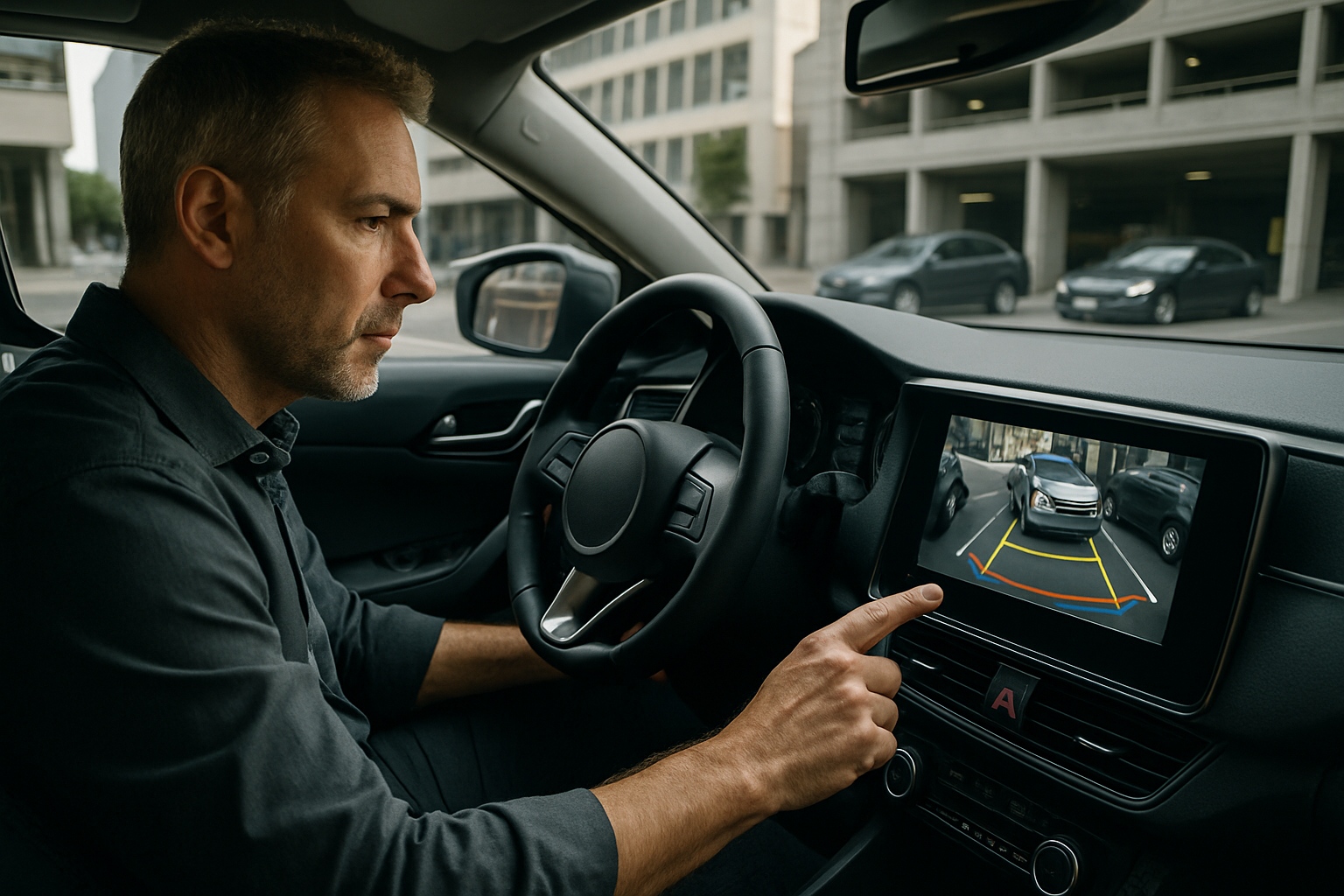Precision Parking: The Rise of Advanced Park Assist Systems
In a bustling city center, a driver effortlessly maneuvers their vehicle into a tight parking spot, hands off the wheel, as the car seamlessly parks itself. This scenario, once the stuff of science fiction, is now a reality thanks to advanced park assist systems. These cutting-edge technologies are revolutionizing the way we park, making the often stressful task of finding and navigating into a parking space a thing of the past. But how do these systems work, and what does their increasing prevalence mean for the future of driving?

However, the real game-changer came with the development of semi-autonomous parking systems. These advanced setups use a combination of sensors, cameras, and sophisticated algorithms to take control of steering, acceleration, and braking during parking maneuvers. The driver’s role is reduced to monitoring the process and intervening if necessary, marking a significant shift in the human-machine dynamic in vehicles.
How Advanced Park Assist Systems Work
At the heart of modern park assist systems lies a complex network of sensors and cameras strategically placed around the vehicle. These sensors, typically ultrasonic or radar-based, constantly scan the environment for suitable parking spaces and potential obstacles. When a suitable spot is identified, the system alerts the driver and, upon activation, takes control of the steering.
The vehicle’s onboard computer processes the data from the sensors in real-time, calculating the optimal path into the parking space. This involves precise control of the steering angle, speed, and in some cases, gear selection. Many systems can handle both parallel and perpendicular parking scenarios, adapting their approach based on the specific situation.
Advanced systems go a step further by incorporating machine learning algorithms. These allow the system to learn from each parking maneuver, continuously improving its performance and adapting to different environments and conditions. This adaptive capability ensures that the system becomes more efficient and reliable over time, much like an experienced human driver.
The Human Factor: Changing the Driving Experience
The introduction of advanced park assist systems is not just a technological advancement; it’s a shift in the fundamental relationship between driver and vehicle. For many, parking is one of the most stressful aspects of driving, particularly in urban environments where space is at a premium. Park assist systems alleviate this stress, potentially making driving more accessible and enjoyable for a broader range of people.
However, this shift also raises questions about driver skill and reliance on technology. As these systems become more prevalent, there’s a concern that drivers may become overly dependent on them, potentially leading to a decline in manual parking skills. This could pose challenges in situations where the technology is unavailable or malfunctioning.
On the flip side, proponents argue that by handling routine parking tasks, these systems free up cognitive resources, allowing drivers to focus on more critical aspects of driving. This could potentially lead to improved overall road safety, as drivers are less likely to be fatigued or stressed by the demands of parking in challenging environments.
Implications for Urban Planning and Infrastructure
The widespread adoption of advanced park assist systems could have far-reaching implications for urban planning and infrastructure design. As vehicles become more adept at navigating tight spaces, it may be possible to redesign parking lots and street parking to accommodate more vehicles in smaller areas. This could help alleviate parking shortages in crowded urban centers and potentially free up valuable real estate for other uses.
Moreover, these systems could pave the way for more efficient automated parking structures. Imagine dropping your car off at the entrance of a parking garage and having it autonomously find a spot and park itself. Such scenarios could significantly reduce the time and frustration associated with finding parking in busy areas.
However, these potential benefits also come with challenges. Urban planners and policymakers will need to consider how to integrate these technologies into existing infrastructure and how to ensure fairness and accessibility for all road users, including those without access to vehicles equipped with advanced parking systems.
The Road Ahead: Challenges and Opportunities
As with any emerging technology, advanced park assist systems face several challenges on the path to widespread adoption. One of the primary concerns is the cost. Currently, these systems are often available only in higher-end vehicles or as expensive optional extras. For the technology to truly transform urban mobility, it needs to become more accessible to the average consumer.
There are also technical challenges to overcome. While current systems perform well in most situations, they can struggle in adverse weather conditions or in environments with poor road markings. Improving the robustness and reliability of these systems across a wide range of conditions is crucial for their long-term success.
Privacy and security concerns also loom large. As these systems collect and process large amounts of data about their surroundings, questions arise about how this information is stored, used, and protected. Ensuring the cybersecurity of these systems is paramount to prevent potential misuse or malicious interference.
Despite these challenges, the future of advanced park assist systems looks promising. As the technology continues to evolve, we can expect to see even more sophisticated systems that blur the line between assisted and fully autonomous parking. These advancements have the potential to reshape our urban landscapes, change our relationship with our vehicles, and ultimately make driving a more accessible and less stressful experience for millions of people around the world.





